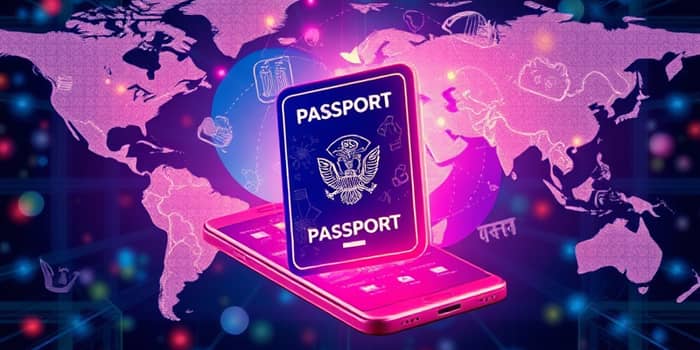
In an era where our smartphones hold the keys to every corner of our lives, identity itself is undergoing a profound transformation. Passports, once tangible booklets stamped at distant borders, are now evolving into digital credentials that can be verified in milliseconds, reshaping how we travel, transact, and prove who we are.
The concept of the electronic version of identification documents extends well beyond travel, promising a future where permissions, privileges, and personal data converge into a secure and ubiquitous identity ecosystem. But what does this transformation really mean, and how will it impact our daily lives?
At its core, a digital identity represents a collection of attributes—such as names, biometric markers, credentials, and usage history—stored electronically. Unlike a simple scanned copy of a driver’s license, digital identities can integrate multiple credentials into a single interface, from age verification and voting eligibility to professional certifications and loyalty memberships.
These identities are authenticated through sophisticated methods including multi-factor authentication, biometrics, and public-key cryptography, ensuring both accuracy and security. Users gain unprecedented control, deciding which attributes to share, with whom, and for how long, thereby embracing privacy by design.
With cutting-edge security via biometric authentication, digital identities can adapt to numerous contexts. For instance, one subset of attributes might be used to withdraw cash at an ATM, while another subset proves eligibility for online health consultations, all without revealing unnecessary personal information.
Passports, the archetypal identity document, have advanced dramatically over the past century. Early models consisted of fragile paper booklets, susceptible to forgery and wear. The late 20th century introduced machine-readable passports, speeding up border checks but still relying largely on manual verification.
With the advent of e-passports, embedded microchips began storing biometric data—digital representations of faces, fingerprints, and iris scans. These innovations led to the creation of automated e-gates at airports, slashing wait times and reducing human error in security checks.
Today, the digital passport promises to be an entirely mobile-first credential. Stored securely within smartphone wallets or dedicated apps, it can be presented via QR codes or NFC at checkpoints, granting access to airports, financial institutions, or even smart buildings. In essence, the economic passport to digital prosperity can facilitate identity verification at any service point.
Numerous countries have recognized the transformative potential of digital identity, launching large-scale initiatives to modernize citizen services and stimulate economic growth.
In the United States, the push toward digital identity has gained momentum. Colorado’s myColorado app reached over one million users by 2022, allowing citizens to present digital driver’s licenses at local checkpoints. Legislative efforts like the Improving Digital Identity Act of 2023 aim to create cohesive frameworks for digital IDs across states.
Transitioning to digital identity systems offers a myriad of benefits:
Research by McKinsey estimates that widespread digital ID adoption could save approximately 110 billion hours of transaction time globally and deliver up to $1.6 trillion in economic value each year by reducing fraud, improving service delivery, and lowering administrative costs.
While the travel industry remains a prominent beneficiary, the ripple effects of digital identity extend far beyond international borders. In the financial sector, institutions can rapidly verify customer identities, leading to near-instant account creation and stronger fraud prevention. Healthcare providers can grant temporary access to patient records, streamlining telemedicine and cross-hospital coordination.
Employers, universities, and certification bodies can issue verifiable digital certificates that recipients can present without intermediary verification. In humanitarian contexts, displaced individuals can retain their identities and access vital services even when physical documents are destroyed.
Despite these promising developments, the journey toward universal digital identity faces significant hurdles:
Overcoming these obstacles demands a collaborative approach. Governments, technology companies, civil society, and standard-setting bodies must work together to design inclusive, transparent, and secure systems that earn public trust.
Concrete data highlights the transformative potential of digital identity:
The concept of a digital identity passport is rapidly evolving into a universal key that unlocks seamless interactions across our increasingly interconnected world. No longer confined to airports and embassies, this passport will grant access to everything from healthcare services to educational platforms and digital marketplaces.
To realize this vision, stakeholders must prioritize open standards, robust cybersecurity measures, and inclusive design that considers every citizen’s needs. As national frameworks mature and international agreements solidify, we move closer to a future where identity is truly borderless, verifiable, and secure.
Embracing digital identity today means stepping into a tomorrow where opportunities expand beyond physical boundaries and every individual can participate fully in the digital economy. By harnessing innovation responsibly and building trust through transparency, we can ensure that the digital passport benefits all of humanity, ushering in a new era of connected, empowered citizenship.
References













